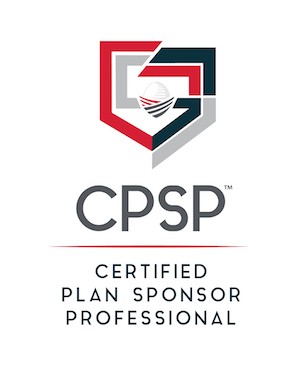 At a recent meeting of the Department of Labor’s 2019 Advisory Council on Employee Welfare and Pension Benefit Plans, American Retirement Association Chief Content Officer Nevin Adams offered a look at a new ARA effort to help plan sponsors better understand and fulfill their obligations as sponsor and fiduciary and improve the financial statement audit process.
At a recent meeting of the Department of Labor’s 2019 Advisory Council on Employee Welfare and Pension Benefit Plans, American Retirement Association Chief Content Officer Nevin Adams offered a look at a new ARA effort to help plan sponsors better understand and fulfill their obligations as sponsor and fiduciary and improve the financial statement audit process.
In the course of meeting “with thousands of plan sponsors in a variety of roles over the years,” Adams told the council, “they all had one thing in common—they found themselves with the duties of a plan sponsor with little or no training to equip them for that responsibility.” He remarked to the council that “there’s more than a bit of irony that individuals who find themselves in a job with personal liability for their actions alongside an expectation of prudence that courts have described as the ‘highest known to man’ have often had little in the way of practical, retirement plan administration focused training.”
Plan Sponsor Credential
Adams outlined for the council the efforts of the ARA and the Plan Sponsor Council of America (PSCA) to develop a new education credential for retirement plan sponsors, the Certified Plan Sponsor Professional (CPSP). In developing the CPSP program, he said, the relevant areas of concernwere “condensed into nine key areas of focus that remain the organizational focus of the credential, and those various areas were further weighted by our panel of subject matter experts (SMEs), based on their perceived criticality to the position,” Adams said.
Those nine key areas are:
- considerations for retirement plan design
- the most popular defined contribution plan: the 401(k)
- beyond the 401(k) (other types of employer-sponsored retirement plans)
- plan fiduciary obligations and risk management
- investment concepts
- employee engagement
- vendor management and selection
- plan operations
- plan audits and compliance
With the support of five key education partners, Adams said, the ARA engaged teams of industry experts and developed three courses comprised of those nine modules. “The bottom line is that we wanted a program that was not just ‘book learning’ but covered critical material in a manner that would speak not only to the essence of what plan sponsors need to know, but what they need to know how to do. That practical focus is embodied in the organization of our nine immersive modules – how to choose, build, and run/operate a retirement plan,” he told the council.
The program was launched on April 2, 2019, Adams said, and is being distributed through the PSCA’s membership, in conjunction with ARA education partners, and via limited licensing agreements with 4,000 retirement plan advisors who have attained the NAPA Certified Plan Fiduciary Advisor credential. The program and exam are available to plan sponsors at no cost through one of these distribution channels, he said. “Decades of experience with plan sponsors has affirmed our belief that to maximize the impact of this program, it needed to be designed not only to be readily accessible and modular, but available at no cost to plan sponsors. That was a commitment we were able to support not only with the commitment of ARA and PSCA resources, but the generous support of our education partners,” Adams said.
Audits Loom Large
“As you would expect,” Adams remarked, “the issues of compliance and audits loom large for plan sponsors, and we devote one of the most substantive CPSP modules to that focus.” Most of the course content focuses on successful compliance and on ways that mistakes can be corrected, but it also covers audit requirements and process as well, he reported.
Adams told the council that a critical aspect of that process is selecting an auditor, and said that this selection “must be done prudently, and in the best interests of plan participants and beneficiaries.” He added that the course also provides access to applicable external resources, including the Department of Labor booklet, “Selecting an Auditor for Your Employee Benefit Plan.”
However, Adams said, “as important as the audit can be, it’s just one element of a plan sponsor’s focus. What makes for a successful audit is fulfilling one’s obligations as a plan sponsor and plan fiduciary. That’s the essence of the CPSP curriculum program—to help plan sponsors better understand and fulfill those responsibilities.”
The Big Picture
Adams called the course “an immersive, interactive, program design that covers a wide range of critical plan sponsor responsibilities and options. In developing and distributing this readily accessible and robust curriculum broadly within the plan sponsor community, we hope to both educate and raise awareness of the key roles and responsibilities placed on those who oversee the nation’s private retirement system. The dedicated professionals who do extraordinary work every day in support of millions of workers’ successful retirements often do so without the requisite education or affirmation of that responsibility by the leaders of their organizations,” Adams said. “They deserve both,” he told the council.
ARA Education Programs
More information on the education offerings from the ARA sister organizations is available online for ASPPA, NAPA, NTSA and PSCA.

